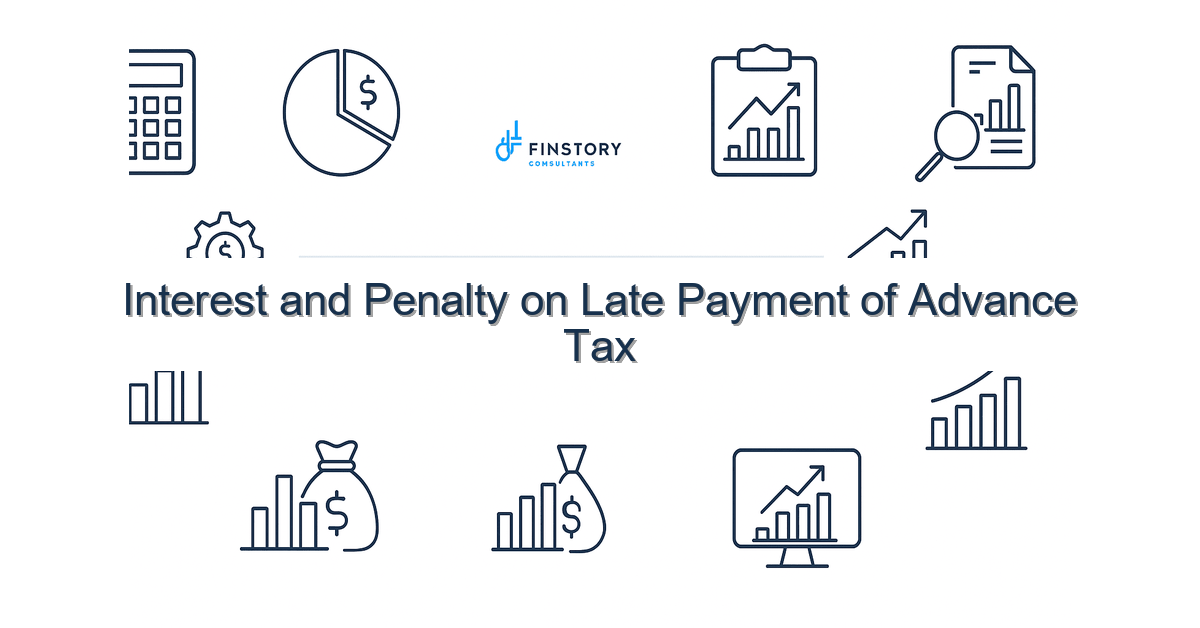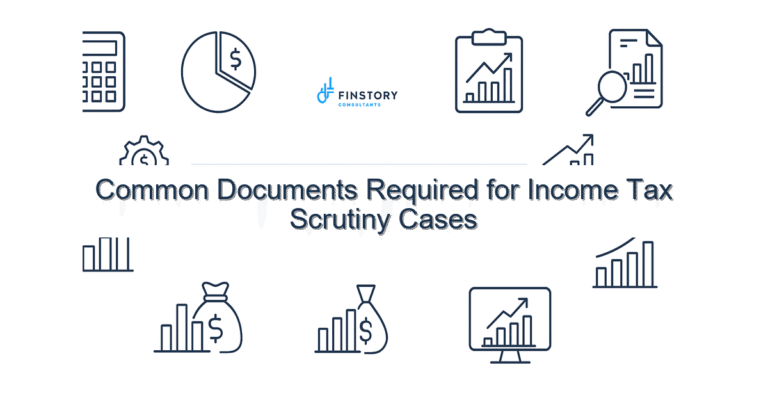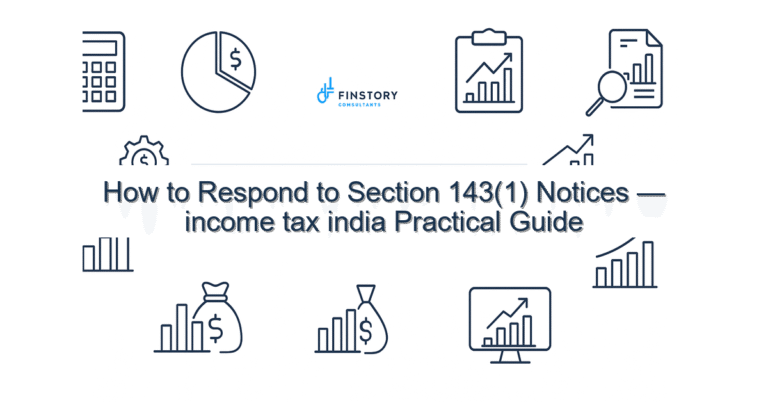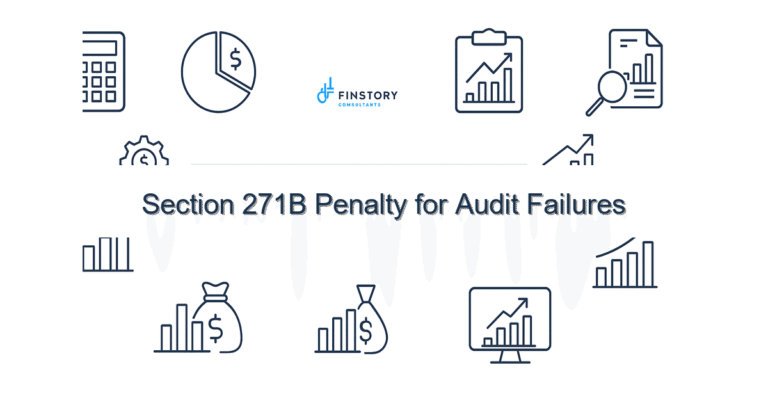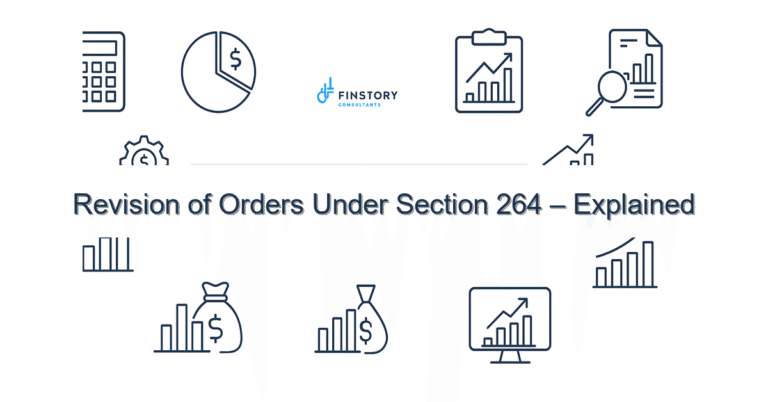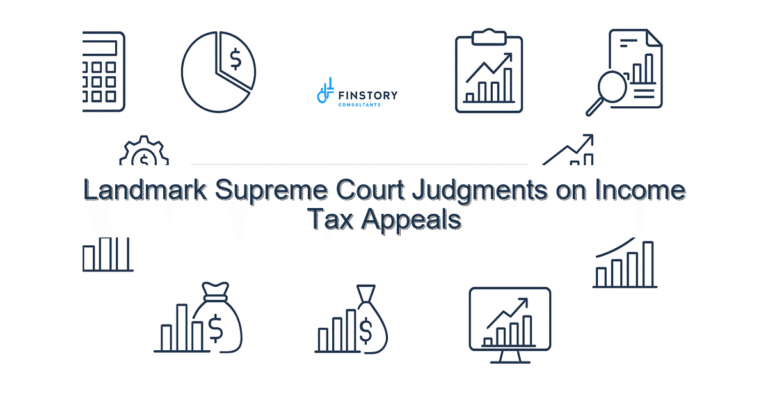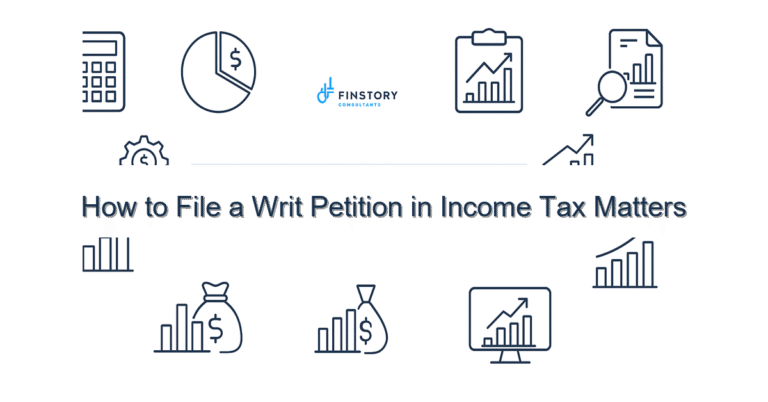Interest and Penalty on Late Payment of Advance Tax
Paying tax on time is one thing — understanding the extra cost when you don’t is another. Many salaried employees, professionals, founders and MSMEs realise too late that small delays in advance tax payments can add up to large interest and penalties. You’re not alone if you feel confused about provisional payments, due dates and the calculations.
Summary: The core takeaway: under India rules, missed or underpaid advance tax attracts interest under Sections 234B and 234C; simple planning, timely instalments and reconciliations with AIS/26AS can dramatically reduce extra cost and notices. If you want a personalised plan, talk to Finstory.
What’s the real problem in India?
Advance tax rules are intended to make sure tax is paid as income accrues, not only at ITR filing. But taxpayers face friction from complex timelines (assessment year vs previous year terminology), changing CBDT circulars, and multiple forms and portals. The e-filing portal, TDS/TCS reporting, and reconciliations via AIS/26AS add administrative load. For businesses and professionals, estimating taxable income and accounting for capital gains indexation or TDS/TCS mismatches increases error risk.
- Missed instalments because cash flow cycles don’t match tax instalment dates.
- Underestimation of taxable income — especially capital gains or bonus income.
- Mismatches between TDS/TCS credits and actual tax liability (not checked via AIS/26AS).
- Confusion over AY/PY calendars, ITR filing last date and whether to pick new vs old regime slabs.
What people get wrong
Common pitfalls are surprisingly consistent:
- Assuming salaried TDS covers all tax due — many forget additional income (freelance, capital gains, rental).
- Not making interim payments when profit spikes (founders and startups after a funding event or sale).
- Relying on last-minute payments close to the ITR filing last date — that doesn’t avoid interest charged earlier in the year.
- Mistaking penalty under Section 271 for the interest under 234B/234C — interest applies automatically, penalty is discretionary and separate.
A better approach
Follow a structured, practical framework to avoid interest and penalties.
- Estimate taxable income quarterly: include salary, freelancing, capital gains, dividends and any taxable grants or ESOP exercises.
- Compare tax liability to total TDS/TCS and already-paid advance tax (check AIS/26AS monthly).
- Pay shortfalls on or before prescribed advance tax instalment dates; use e-filing or net banking.
- Document assumptions used to estimate income for each instalment (helps if you receive a notice).
- Review before ITR filing: reconcile AIS/26AS, claim eligible deductions like Section 80C limit items, and choose between new vs old regime slabs based on net savings.
Real-world example: A Bangalore-based freelancer underestimated Q1 capital gains from a short-term sale. An extra Rs. 1.5 lakh in unpaid advance tax attracted interest that cost ~Rs. 4,000 — easily avoidable by checking AIS/26AS and paying a single interim instalment.
Quick implementation checklist
- Log into the income tax india e-filing portal and view your AIS/26AS today.
- Calculate expected annual income using conservative estimates; include capital gains indexation where relevant.
- Compare expected tax with TDS/TCS already reflected in AIS/26AS.
- If shortfall exists, pay advance tax by the next instalment date via Challan 280.
- Keep proof of payment and a short note of calculation for your records.
- Re-check before ITR filing last date to avoid last-minute surprises.
- Claim allowed deductions such as investments under Section 80C limit or home loan interest correctly.
- If you have variable income, set quarterly reminders tied to financial close or payroll runs.
- Use basic TDS/TCS tracking tools or spreadsheets to reconcile monthly.
- Book a short review with a tax advisor if the numbers change materially (sale, ESOP exit, large dividend, or funding event).
What success looks like
- Lower interest outgo: near-zero interest from advance tax mistakes.
- Fewer tax notices and faster resolution when they do arise.
- Higher refund rates and smoother ITR processing because AIS/26AS reconciles.
- Predictable cash flow planning for founders and MSMEs aligned with tax instalments.
- Confident choice between new vs old regime slabs at filing, maximising net savings.
Risks & how to manage them
Risk: Underpayment and automatic interest under Sections 234B/234C. Mitigation: conservative estimates and immediate top-ups when income increases. Risk: TDS/TCS mismatch leading to lower credit in AIS/26AS. Mitigation: track TDS certificates, follow up with deductors and upload corrections via the e-filing portal. Risk: Missing ITR filing last date and late fee. Mitigation: set calendar reminders and keep documents ready (TDS certificates, bank statements, Form 26AS).
Tools & data
Use these India-specific resources to stay accurate:
- AIS/26AS — monthly reconciliation of TDS/TCS credits and tax payments.
- Income tax e-filing portal — pay advance tax (Challan 280), file ITR and respond to notices.
- TDS/TCS tracking tools or simple spreadsheets to reconcile receipts, TDS certificates and deductor PANs.
- Reference guides for new vs old regime slabs, Section 80C limit updates, and capital gains indexation rules.
- Keep records of bank interest, dividend statements and broker reports to calculate taxable income accurately.
FAQs
Q: What interest is levied if I miss advance tax instalments?
A: Interest is charged under Section 234C for deferment of instalments and under Section 234B if you have not paid at least 90% of your total tax before filing ITR. These are automatic and calculated by the tax system.
Q: Can TDS alone avoid advance tax liability?
A: Only if TDS covers at least 90% of the total tax liability by the due dates. For variable income, it’s safer to pay any shortfall as advance tax. Check TDS/TCS entries in AIS/26AS.
Q: Does last-minute full payment before ITR filing avoid interest?
A: No. Interest under 234C applies for missed instalments during the year; paying everything on the ITR filing last date does not erase earlier interest charges.
Q: How do I decide between new vs old regime slabs?
A: Compare net tax after claiming deductions (Section 80C limit, home loan interest) under the old regime versus tax under the new regime slabs. We often run both scenarios during ITR planning. See [link:tax-saving tips] and [link:ITR guide] for more on this.
Next steps
If you suspect underpayment, start by checking AIS/26AS and running a quick estimate. Small proactive payments now can save disproportionate interest later. If your income is variable, or you have capital events (sale, ESOPs, funding), a short review can help you avoid costly mistakes.
Work with Finstory. Speak with an Expert for a personalised plan to reduce your tax outgo and stay compliant. Book a free 20-min consultation.
📞 Need help with Income Tax in India?
Book a 20-min consultation with our tax team. Individuals, founders & MSMEs welcome.
Prefer email or phone? Write to info@finstory.net
or call +91 44-45811170.
